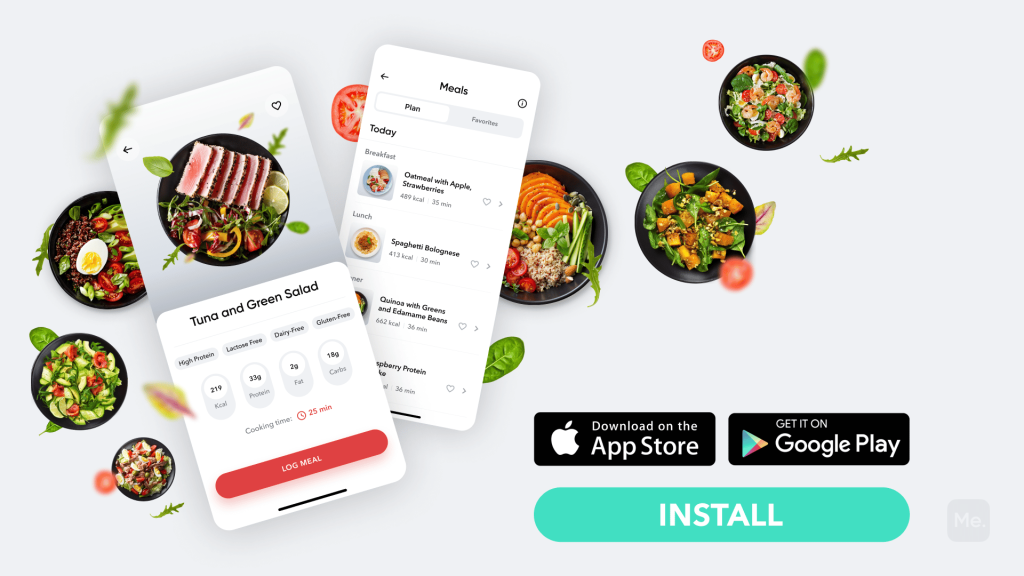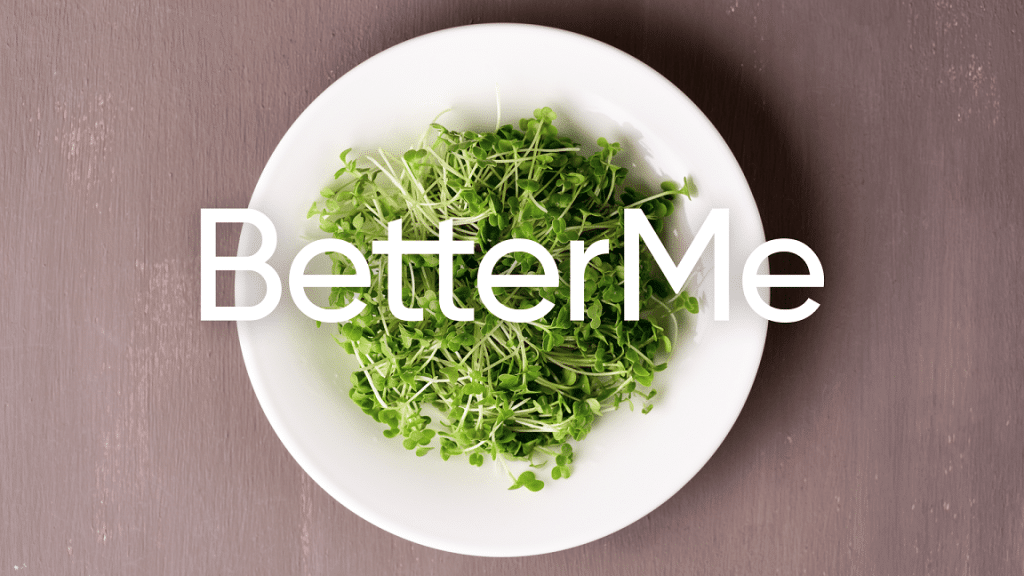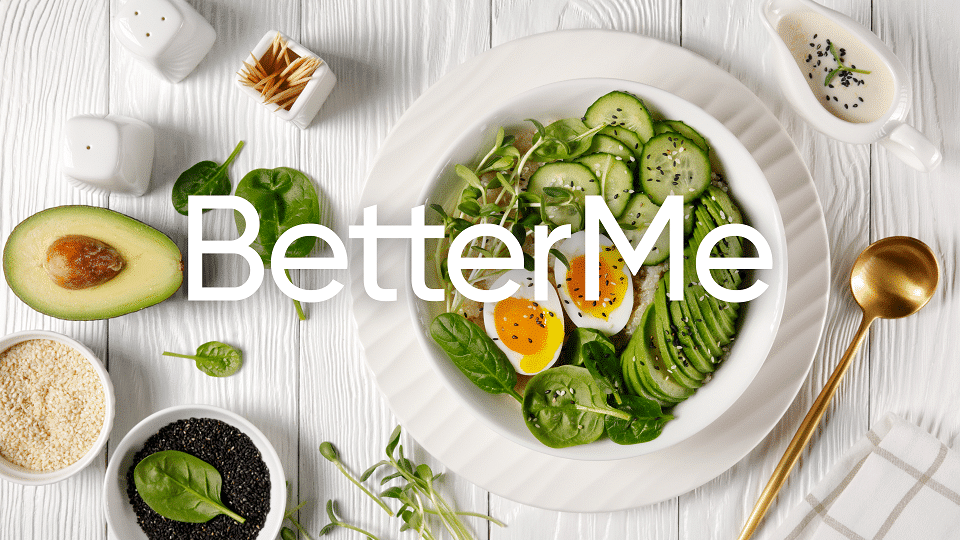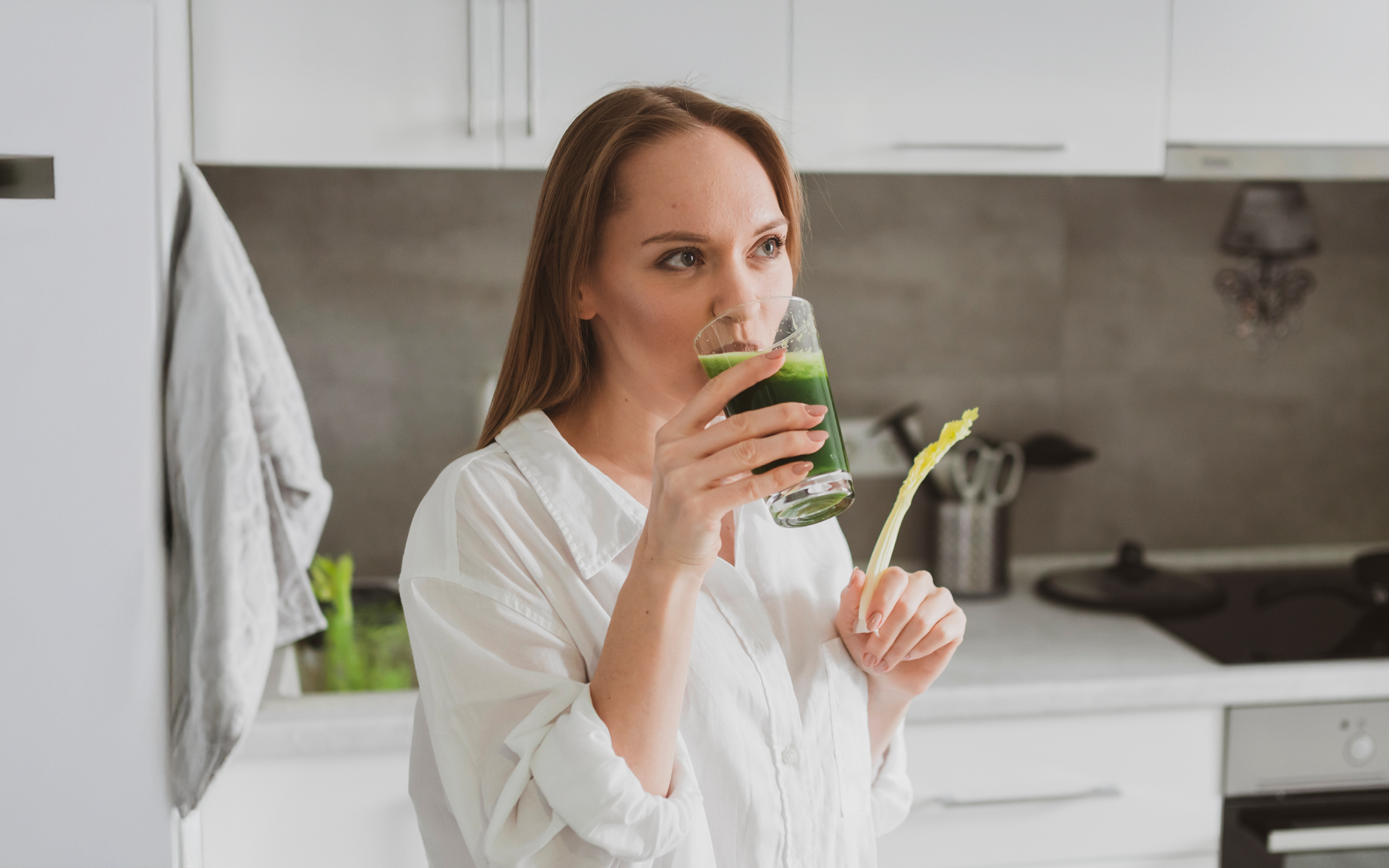According to the CDC, only about 1 in 10 adults get the recommended amount of vegetables every day. Less than 1 in 3 consume the recommended amount of fruits (8). Why is it so hard to eat enough fresh produce? There are a few reasons. First, many people simply don’t like the taste of vegetables. Second, fresh vegetables can be expensive, and they often go bad before you have a chance to eat them. And finally, it can be hard to find the time to cook vegetables when you’re already busy with work and other obligations. But there are ways to overcome these obstacles and eat more vegetables even when you don’t feel like it. In this article, we’ll cover a few tips and tricks for how to do just that.
Get your personalized
meal plan!
How Can I Get Myself To Eat More Vegetables?
1. Add Vegetables To Foods You Already Enjoy
One of the easiest ways to eat more vegetables is to simply add them to foods you already enjoy. For example, if you love pasta, try adding some chopped veggies to your sauce. Or if you’re a fan of tacos, load them up with shredded lettuce, diced tomatoes, and other veggies.
2. Start Your Day With A Vegetable-Packed Breakfast
Another great way to eat more fruits or vegetables is to start your day with a produce-packed breakfast. Try adding spinach or kale to your morning smoothie or omelet, or top your oatmeal with sliced bananas and diced apples.
3. Make Vegetables The Main Event
Instead of relegating vegetables to the side of your plate, make them the main event. Try a vegetable-based soup or stew for lunch, and experiment with vegetarian recipes for dinner. You might be surprised at how much you enjoy eating meals that are mostly vegetables.
4. Switch Up Your Snacks
If you’re in the habit of snacking on unhealthy foods like chips or candy, try swapping them out for healthier options like carrots, celery, or cherry tomatoes. You can also make your own healthy snacks at home, like roasted kale chips or veggie-based energy bars. Veggies make excellent snacks, they are rich in fiber so they will tide you over until your next meal.
5. Spiralize Vegetables To Make Noodles
Noodles are a staple in many diets, but they are often made from refined flour and can be high in calories (2). A great alternative is to spiralize vegetables to make noodles. Zucchini, carrots, and sweet potatoes all work well for this. Just use a spiralizer to turn them into noodles, then add your favorite sauce or toppings.
6. Make Veggie-Based Sauces
Thinking of a store-bought jar of pasta sauce? Check the label first – many of them are loaded with added sugar and other unhealthy ingredients (9). A better option is to make your own veggie-based sauce. Start by sautéing some onions and garlic, then add in a can of crushed tomatoes and any other veggies or spices you like. Let it all simmer together until it’s nice and thick.You can puree it for a smoother texture if you prefer.
Read More: Sea Vegetables: Nutritional Powerhouse Or Overrated Health Food?
7. Make Wraps With Lettuce Leaves
Traditional wraps are made with white flour tortillas, but you can easily swap with lettuce leaves for a lighter option. Just use large lettuce or cabbage leaves as the wrap, and fill them with your favorite veggies, hummus, or other fillings.
8. Use Veggies As Pizza Toppings
Pizza is another food that’s often made with white flour, but you can easily sub with a veggie-based crust. Or, if that’s too much work, just top your regular pizza with lots of veggies instead of meat.
9. Use Spaghetti Squash For Lasagna
Lasagna is usually made with layers of pasta, but you can lighten it up by using spaghetti squash instead. Just cook the spaghetti squash in the oven until tender, then use it in place of noodles in your lasagna recipe. You can do the same with thinly sliced eggplant or zucchini as well.
10. Elevate Your Salad
Salads are a great way to eat more vegetables, but they can sometimes be boring. To make them more interesting, try adding some new ingredients or dressings. Some ideas include roasted veggies, quinoa, avocado, and homemade vinaigrettes.
11. Use Cauliflower In Place Of Rice
Cauliflower is a great low-carb alternative to rice. Grate or process it in a food processor until it resembles rice, then cook it in the microwave or stovetop. You can use it as a replacement for rice in any recipe.
12. Make Veggie-Based Desserts
An unlikely combination, but you can actually make some pretty delicious desserts with vegetables. Try a chocolate avocado mousse, sweet potato brownies, or zucchini bread. You might be surprised at how good they are! Below are some nifty baking hacks that help you incorporate more veggies in your desserts:
- use vegetables like pumpkin or banana puree in place of some of the fat or sugar in your favorite recipes. This will make them lighter and add fruit or veggies without sacrificing taste.
- use zucchini or carrots in cakes or quick breads to add moisture without adding a lot of calories.
- experiment with using different types of flour, like almond flour or chickpea flour, in your baking. These are alternatives to traditional wheat flour and can add some interesting flavor to your desserts (6).
- use unsweetened applesauce or mashed bananas in place of some of the sugar or fat to cut down on calories.
- use aquafaba (chickpea water) in place of eggs or egg whites to make vegan desserts.
- top your desserts with fresh fruit instead of sugary frosting or icing.
14. Make Soups And Stews
Soups and stews are a great way to pack in lots of vegetables. They’re also typically very easy to make – just throw all of your ingredients into one pot and let them simmer together.
13. Dip Your Veggies In Something Delicious
If you find that plain vegetables are just too boring, try dipping them in something delicious. Hummus, guacamole, or even ranch dressing all make great dips. You can also make your own healthy dips at home with yogurt, spices, and herbs.
14. Get Creative With Your Herbs And Spices
One of the best ways to make vegetables taste good is to get creative with your herbs and spices. A good combination of seasoning can make even the simplest dish taste delicious. Don’t be afraid to experiment with different herbs and spices until you find a combination that you love.
BetterMe app will provide you with a host of fat-frying fitness routines that’ll scare the extra pounds away and turn your body into a masterpiece! Get your life moving in the right direction with BetterMe!
15. Get Creative With Your Cooking Methods
If you’re bored with the same old vegetables, get creative and try new recipes or cooking methods. Roasting vegetables in the oven can bring out their natural sweetness, while grilling them can add a smoky flavor.
16. Buy Frozen Vegetables
Pricey fresh vegetables can sometimes go bad before you have a chance to use them. A great solution is to buy frozen vegetables instead. Frozen vegetables are just as nutritious as fresh, and they last much longer. Plus, they’re often cheaper than fresh vegetables (11).
17. Buy Seasonal Vegetables
In-season vegetables are typically cheaper and tastier than out-of-season options. To find out what’s in season, check your local farmers market or grocery store.
18. Plant A Garden
If you have some space, consider planting a garden. Not only will you get to eat delicious fresh vegetables, but you’ll also get some exercise and fresh air.
20. Preserve Your Own Vegetables
If you have an excess of vegetables, consider preserving them so that you can enjoy them later. Canning and pickling are both great options for preserving vegetables.
21. Find A Vegetable You Actually Like
If you really can’t stand the taste of most vegetables, don’t give up hope. There’s probably at least one vegetable out there that you actually like. It might take some trial and error and experimenting with different preparation methods to find it, but once you do, you’ll have an easy way to add more vegetables to your diet.
22. Meal Prep Vegetables In Advance
One of the best ways to make sure you eat more vegetables is to prepare them in advance. Cut up some vegetables and store them in the fridge, or prep a big batch of roasted veggies at the beginning of the week.
That way, they’ll be ready to eat whenever you need them. Meal prepping also makes it more likely that you’ll actually eat the vegetables you’ve prepared, since they’ll already be cooked and ready to go.
23. Get Your Family And Friends Involved
One of the best ways to make sure you’re eating enough vegetables is to get your family and friends involved. Encourage them to eat more veggies with you, and cook meals together that are packed with nutritious produce.
Read More: How To Make Vegetables Taste Good? 8 Vegetable Ideas And Recipes
What Happens When You Start To Eat More Vegetables?
The recommendation to eat more vegetables comes with a lot of benefits. Just a few of these benefits include:
- Increased nutrient intake: Vegetables are packed with essential vitamins, minerals, and antioxidants that can help your body function properly (4).
- Improved digestion: Fiber-rich vegetables help to promote regularity and keep things moving through your digestive system (5).
- Weight loss: swapping out high-calorie, ultra processed foods for lower calorie vegetables can help you to shed unwanted pounds (10).
- Reduced risk of chronic disease: A diet rich in fruits and vegetables has been linked with a reduced risk of heart disease, stroke, cancer, and other chronic conditions (4).
- Improved mental health: The nutrients in vegetables may also promote better mental health by helping to reduce inflammation and protect your brain cells(7).
- Increased energy: Vegetables are a great source of complex carbohydrates and other nutrients that can help to boost your energy levels (4).
- Better skin health: The antioxidants in vegetables can help to protect your skin from damage and keep it looking healthy and radiant (4).
- Improved bone health: The vitamins and minerals in vegetables are essential for keeping your bones strong and healthy (3).
Betterme will keep you laser-focused on your weight loss journey! Nutrient-packed meal plans, fat-blasting workouts, galvanizing challenges and much more. Try using the app and see for yourself!
How Much Vegetables Should You Eat?
The 5-A-Day campaign (from the CDC) recommends consuming at least 5 servings of fruits and vegetables per day (1). A serving is generally considered to be:
- 1/2 cup of cooked or 1 cup of raw vegetables
- 1 cup of leafy greens
- 1/2 cup of vegetable juice
- 1 medium fruit
While 5 servings may seem like a lot, it’s actually not that difficult to reach this goal if you get creative with how you’re incorporating vegetables into your diet.
The Bottom Line
Eating more vegetables has a multitude of benefits for your health. For one, vegetables are packed with nutrients like vitamins, minerals, and fiber.
They can also help you maintain a healthy weight, and they may reduce your risk of developing chronic diseases like heart disease, diabetes, and cancer. Following the tips in this article should help you increase your vegetable intake and may improve your overall health.
DISCLAIMER:
This article is intended for general informational purposes only and does not serve to address individual circumstances. It is not a substitute for professional advice or help and should not be relied on for making any kind of decision-making. Any action taken as a direct or indirect result of the information in this article is entirely at your own risk and is your sole responsibility.
BetterMe, its content staff, and its medical advisors accept no responsibility for inaccuracies, errors, misstatements, inconsistencies, or omissions and specifically disclaim any liability, loss or risk, personal, professional or otherwise, which may be incurred as a consequence, directly or indirectly, of the use and/or application of any content.
You should always seek the advice of your physician or other qualified health provider with any questions you may have regarding a medical condition or your specific situation. Never disregard professional medical advice or delay seeking it because of BetterMe content. If you suspect or think you may have a medical emergency, call your doctor.
SOURCES:
- 5 A Day Works (2005, cdc.gov)
- Do we need to worry about eating wheat? (2016, nih.gov)
- Fruit and vegetable intake and bones: A systematic review and meta-analysis (2019, nih.gov)
- Health Benefits of Fruits and Vegetables (2012, nih.gov)
- High Fiber Diet (2022, nih.gov)
- How to Use Healthy Flour Substitutes – Or Have Your Cake and Eat It Too (2019, clevelandclinic.org)
- Nutrients and bioactives in green leafy vegetables and cognitive decline (2018, nih.gov)
- Only 1 in 10 Adults Get Enough Fruits or Vegetables (2021, cdc.gov)
- Relationship between Added Sugars Consumption and Chronic Disease Risk Factors: Current Understanding (2016, nih.gov)
- The Relationship between Vegetable Intake and Weight Outcomes: A Systematic Review of Cohort Studies (2018, nih.gov)
- Why frozen fruit and veggies may be better for you than fresh | CNN (2019, nih.gov)












